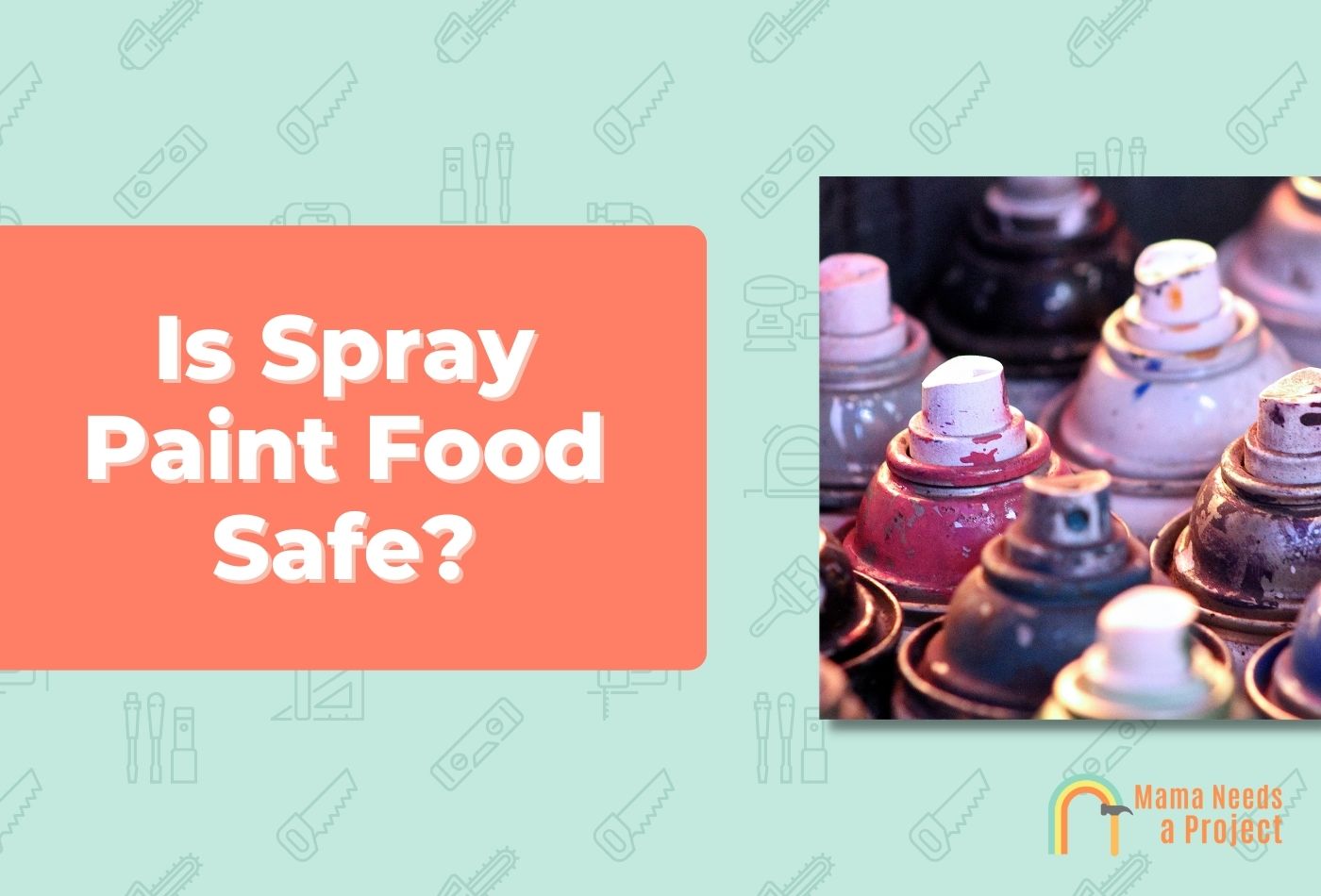Is Spray Paint Food Safe? (Quick Answer!)
Paint can be applied to surfaces in a handful of ways, and using spray paint is one of the easiest methods.
This kind of paint is easy-to-use, cost-effective, and reliable, but is spray paint food safe?
The answer isn’t a clear yes or no, so in this post, I’ll discuss everything you need to know about spray paint as it relates to food safety. Let’s dig in!
- The vast majority of spray paints are not food-safe, and those that are technically safe for food-related surfaces are not recognized as such by regulatory agencies. That said, there are some food safe spray paints that you can find.
- And even if you use a food-safe spray paint, you should seal the surface with polyurethane or another varnish to ensure food never directly touches paint.
Is Spray Paint Food Safe?
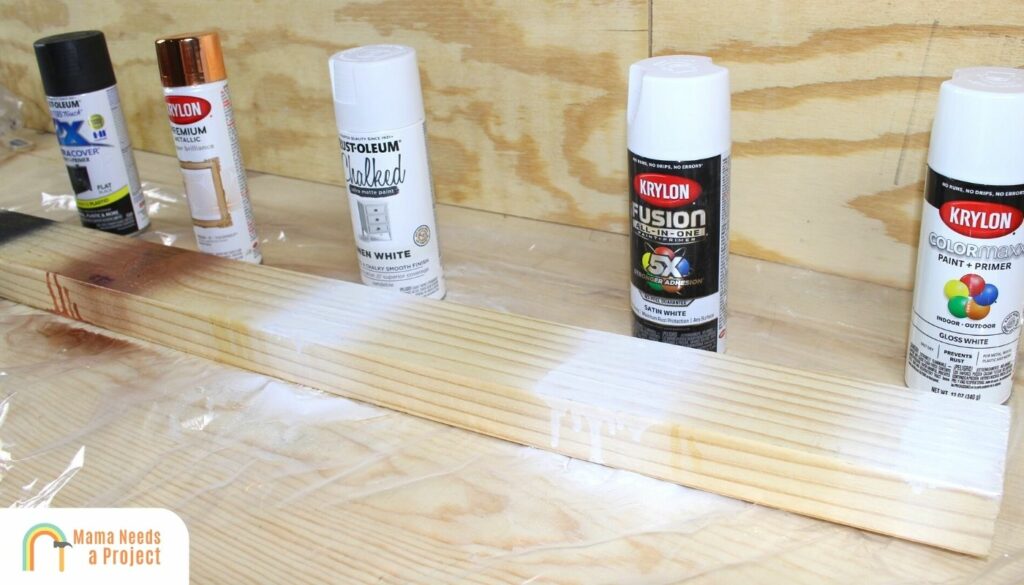
Most spray paints aren’t food-safe. That is, you shouldn’t use the vast majority of spray paints on any surfaces that frequently make contact with food, since most spray paints contain harmful chemicals that can contaminate food and make it toxic.
To be clear, no spray paint is certified “food-safe” by a major regulator like the Food an Drug Administration (FDA), but some spray paints possess qualities that make them much safer than others, and these can be considered food-safe even though they’re not certified as such.
In truth, there are much better paint options for food-related surfaces, and you should make every effort to try before resorting to spray paint, but more on that later.
Wondering if spray paint is waterproof? Check out my guide to understand if spray paint is water proof!
Can You Make Spray Paint Food Safe?
While you can’t turn regular spray paint into food-safe spray paint, you could take a food-safe paint and thin it till it can be sprayed with a paint sprayer.
Of course, you can’t alter canned spray paint because the container doesn’t allow for this, but you can add a protective sealant to ensure there’s a barrier between the paint and the food.
Is Krylon Spray Paint Food Safe?

Krylon is a durable, waterproof spray paint that’s sought-after for its reliability, visual appeal, ease of use, and affordability.
It’s one of a handful of food-safe spray paints available right now, meaning you can spray it on any surface that makes contact with food and not have to worry later about safety.
While it’s not certified food-safe by the FDA, it lacks many of the harmful chemicals that make other spray paints toxic, and when dry it’s virtually free of any toxic elements.
Still, it’s best to seal Krylon spray paint before it ever makes contact with food, just to be on the safe side. After all, it’s not like adding a transparent, durable sealant will diminish the surface—quite the opposite!
Is Rustoleum Spray Paint Food Safe?
There are a handful of versions of Rustoleum, most of which aren’t food safe. Some of their spray paints can be safe for food contact, but only if applied properly.
Rustoleum spray paint is very similar to Krylon spray paint, so it should be sealed with polyurethane or another sealant once it’s completely dry.
Mainly for exterior surfaces, Rustoleum is extra durable, great at preventing rust, and able to withstand the elements better than other spray paints.
However, I wouldn’t recommending spraying glasses, bowls, or cutlery with this spray paint, since there are safer options designed for surfaces that frequently may make direct contact with your lips.
Check out this Krylon vs Rustoleum comparison to find out which brand is best for your projects!
Best Food-Safe Paints to Use
Milk Paint
Milk paint isn’t just a food-safe paint; it’s also especially eco-friendly, so if you use it you’ll be doing your part to protect the environment.
Made of milk protein, lime, and pigment, it’s applied just like regular paint and dries just about as quickly as water-based products.
One thing to keep in mind, however, is this paint isn’t that durable, in large part because it lacks the chemical components that collectively form a durable bond.
Therefore, applying a sealant is necessary. And since milk paint isn’t very viscous, it’s best to only use a water-based sealant on top—this way the color isn’t reduced by a thick coating.
Chalk Paint
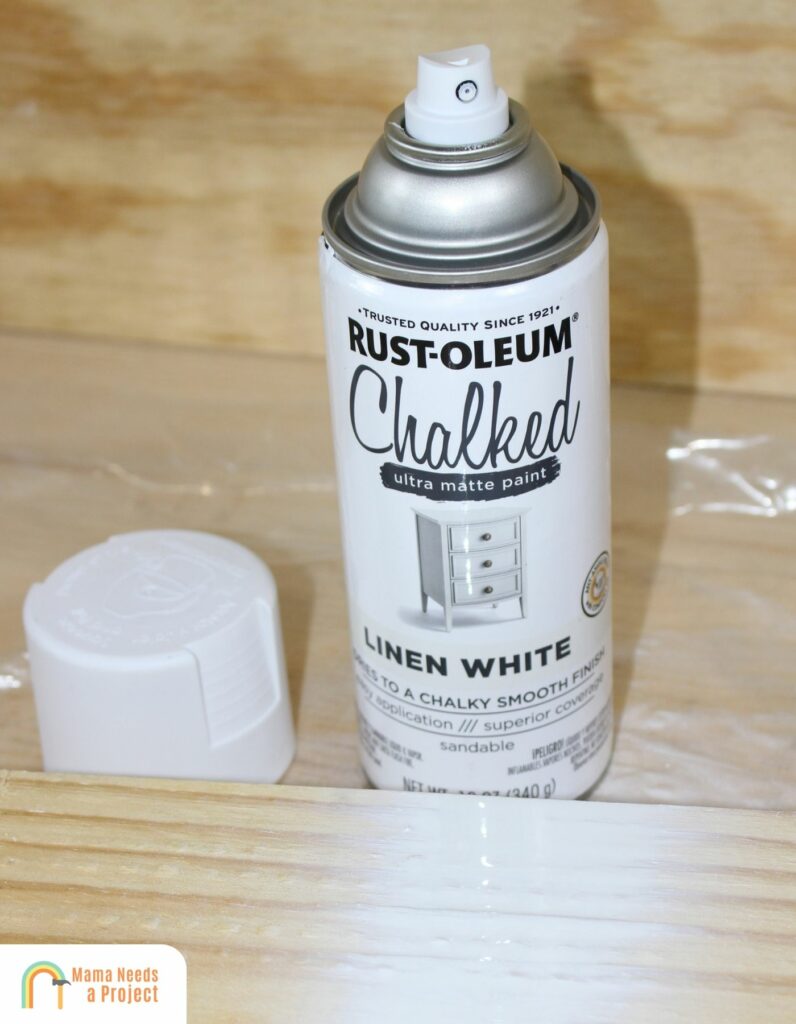
Chalk paint is another eco-friendly option that’s food-safe too, and it’s ideal if you want a matte sheen.
But like milk paint, it isn’t the strongest, so adding a protective coating is necessary to ensure food safety.
This may be a non-toxic paint, but you should still wait for it to dry completely before you prepare food on it.
And it’s best to use a water-based polyurethane with this paint, since it’s already matte and would be furthered muted by a viscous oil-based finish.
Need to remove chalk paint? Check out this guide to removing chalk paint easily!
Relevant Food Safety Regulations
Pretty much every country has an agency dedicated to ensuring food safety. In the United States the agency responsible for regulating food and drugs is the Food and Drug Administration (FDA).
To my knowledge, not one spray paint product is certified “food-safe” by the FDA, but this doesn’t mean products that are technically food safe don’t exist.
If a spray paint doesn’t contain the harmful chemicals that can last even after it’s completely dry, and some don’t, it can be used on food-contact surfaces because there are no chemicals to worry about.
Two regulations are particularly relevant here and should be briefly discussed.
FDA Title 21, Section 175.300
According to this regulation, food container coatings should not release an excessive amount of harmful substances.
This regulation also specifies which coatings are safe for certain types of foods, and it outlines what extreme temperatures are (for coatings) and how long coatings are effective (safe) for.
FDA Title 21, Section 174
This regulation lists the additives that can be used to make a food contact coating.
It also lists additives related to packaging and manufacturing that are safe for contact with food-related surfaces.
What Toxic Chemicals Are in Spray Paint?
Most spray paints contain acetone, xylene, toluene, and other harmful chemicals, and these paints shouldn’t be anywhere near food-related surfaces, especially when there are food-safe alternatives.
Of course, spray paint is much more dangerous when it’s being applied—i.e. when it’s wet—because it’s rife with toxic substances, otherwise known as volatile organic compounds (VOC).
Spray paint can even emit toxic fumes before it’s completely dry, which is why it’s best to stay clear of a recently painted surface that’s drying.
The health problems associated with ingesting food that’s been slightly contaminated by dried spray paint particles are less severe than those associated with over-exposure to drying paint.
Health Risks of Spray Paint
The vast majority of oil-based and water-based spray paints contain a range of harmful components, but these aren’t really a big deal because most of them burn off (so to speak) as the paint dries, and those that remain are significantly weekend.
In truth, you’re more likely to be harmed when spraying paint, but that doesn’t mean paint that’s 100% cured can’t be harmful. And when it comes to food-contact surfaces, this latter point is especially relevant.
After all, eating food off a surface usually requires cutlery, and if you’re constantly stabbing and cut a painted surface, you could chip off a small section of paint and unknowingly eat the separated material, resulting in an upset stomach or worse.
But what exactly should you keep an eye out for when using painted dishes and cutlery? Signs of leeching or chipping.
Food-grade spray paint can resist both leaching and chipping, so if you use this paint you won’t have to worry about your food containers, dishes, cups, or utensils later on.
Leeching
Leeching is usually a result of poor paint application. Essentially, the paint doesn’t dry fast enough, and because of this the surfactants rise to the top of the coat, leaving an oily, sticky residue.
Of course, you can’t have food make contact with paint in this condition, as it’ll be contaminated with harmful substances immediately.
There are two ways to prevent leeching:
- You paint carefully and don’t allow food contact until you’re 100% sure the paint is completely dry.
- You put a food-safe sealant over the spray paint to ensure the paint never touches food.
Chipping
Chipping can lead to you ingesting dried spray paint unintentionally, especially if the spray paint isn’t the best in terms of durability.
Again, sealing the paint would prevent this from happening. There would be a thick, durable barrier between the paint and the food, and it takes a lot more than some stabs with a fork to penetrate a polyurethane or shellac finish.
Apply Spray Paint Safely
Whether you’re using water-based or oil-based spray paint, you should only apply in a well-ventilated area.
You must also wear protective clothing, i.e. goggles, a respirator or mask, gloves, ear protection, long sleeves, and pants.
These precautions are necessary and they’ll ensure you stay clear of the health risks associated with over-exposure to toxic spray paint.
Is a Durable Sealant Necessary?
Adding a durable sealant is a good move if you’re concerned about the lingering toxicity of dry spray paint.
Polyurethane
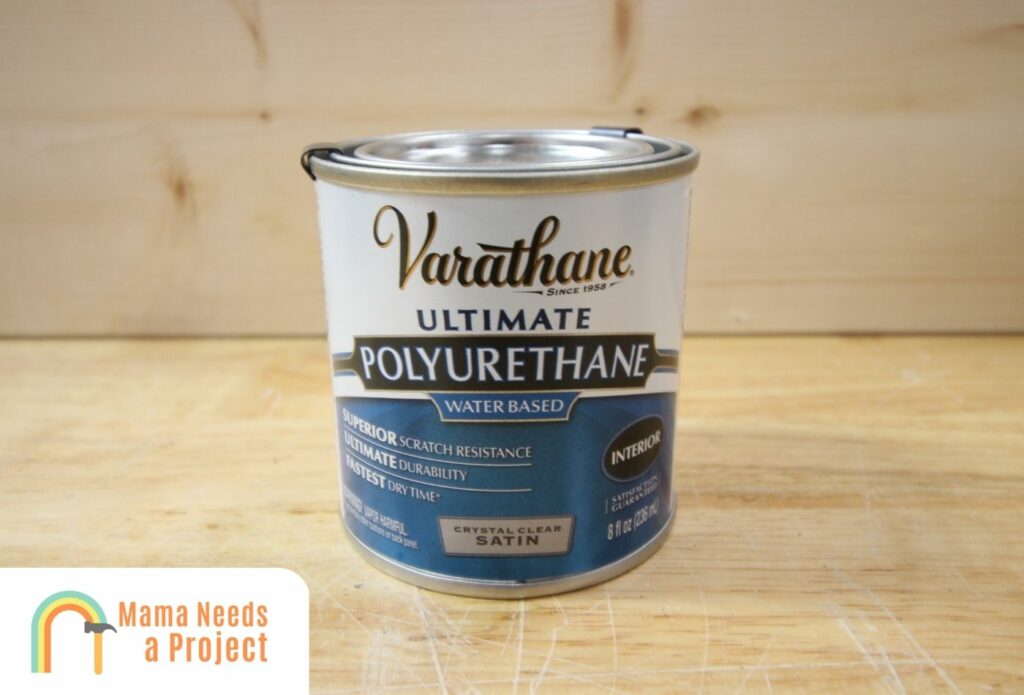
The best sealant for surfaces that make contact with food regularly is polyurethane.
You can use either water-based or oil-based poly, as both work with spray paint. That said, neither polyurethane is non-toxic, but water-based has far less VOC.
But there are, however, versions that don’t have the notoriously toxic chemicals, and these polys work well on painted wooden surfaces.
But take the time to research both kinds of poly before deciding which is best for the surface.
Oil-based poly may be more durable, but it’ll tint the surface yellow and takes longer to dry. Water-based poly isn’t as strong but it dries quickly and is pretty much transparent.
Shellac
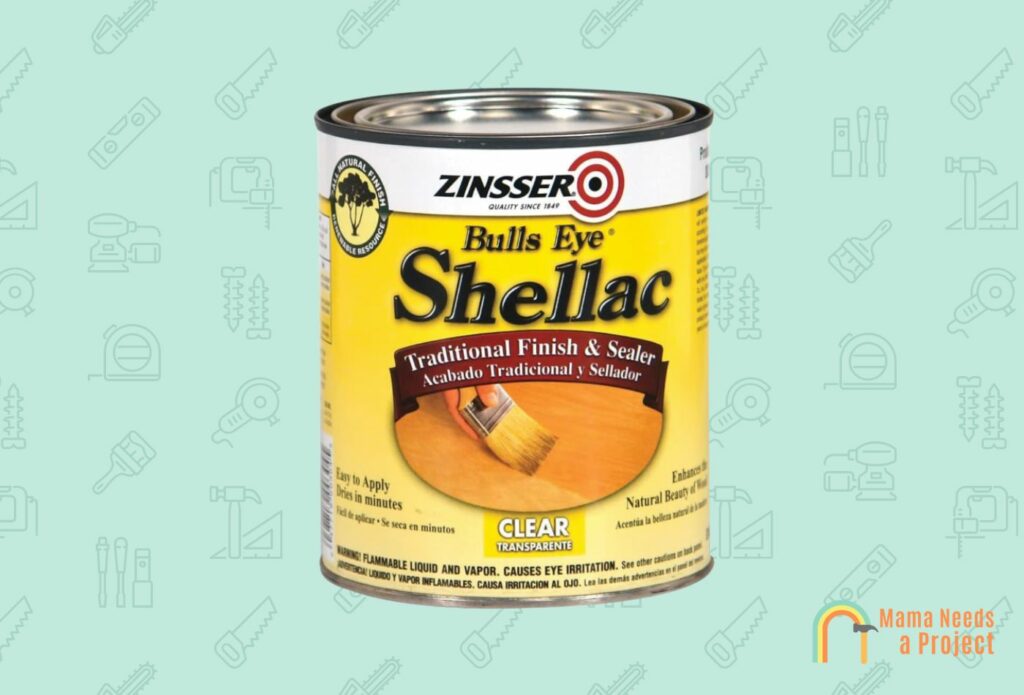
Shellac is a mostly natural sealant, and as such it’s great for surfaces that regularly make contact with food.
Plus, a spray-painted surface that’s coated with shellac will remain vibrant for many years, since this sealant is very good at accentuating wood qualities.
The main ingredient in this sealant is a resin that’s secreted by the lac bug, and because it contains very little in the way of dangerous components you don’t have to worry about potential health risks when using this on surfaces that you regularly eat food off.
The only downside is it can get flaky if not taken care of, but only ingesting a large amount of these flakes will result in a stomach ache or worse.
Natural Oils
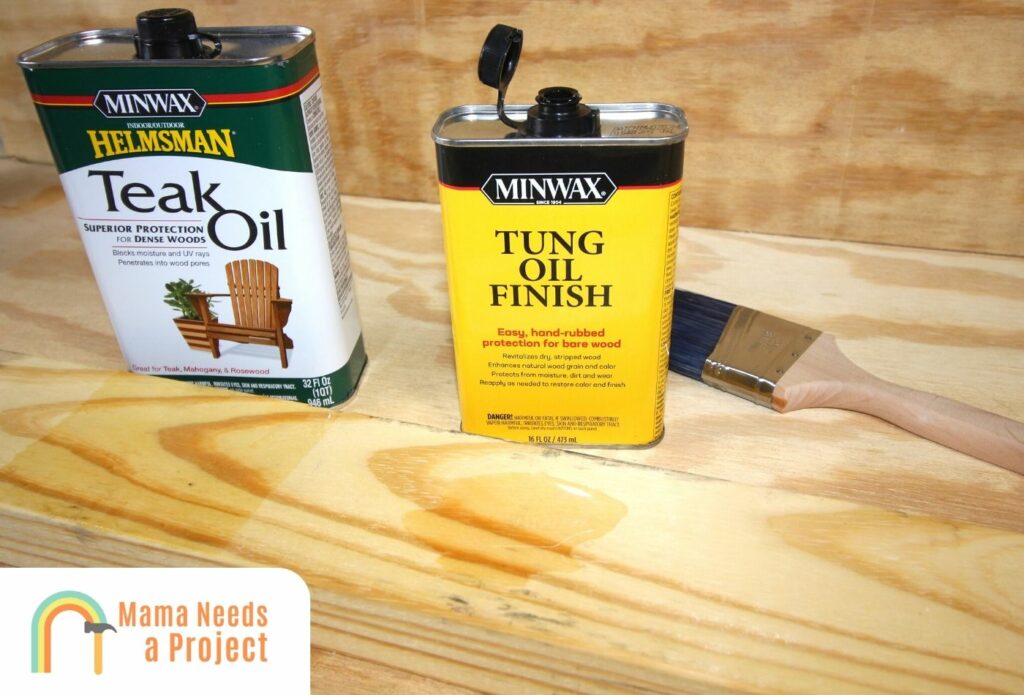
A variety of sealants use natural oils, like linseed oil, tung oil, and walnut oil.
These sealants may be food-safe, but they’re not as strong as poly or shellac, and they really only work on wood and other porous surfaces.
Specifically, natural oil finishes are ideal for hand-crafted dishes, plates, bowls, and cups because they accentuate wood grain and highlight all the unique colors woods can boast.
Want to learn more? Check out these food safe finishes!
Which Materials Are Best for Spray Paint?
Metal
Since metal is dense, smooth, and non-porous, it’s perfect for spray paint.
Polyurethane works well on metal surfaces too, since it doesn’t need to be absorbed to be effective.
But even metal by itself is great for food preparation, since bacteria can’t really live on it for long and it’s easy to clean; this is why metal surfaces are essential in the food industry.
Plastic
You can spray paint reinforced plastic too; it adheres well to strong plastic surfaces for the same reasons it adheres well to metal.
Even if you have food-safe spray paint, it’s best to refrain from spraying plastic food containers, since the paint can leech over time and contaminate the food.
Porcelain
This non-porous material takes spray paint well and it can be coated with polyurethane to ensure durability and safety.
Wooden Surfaces
Did you know you can use spray paint on wood? While it might not adhere quite as well as other surfaces, it will work! So if you’re looking to add some style to your wood projects – give spray paint a try!
FAQs
Can spray paint be used on dishes?
Spray paint can be used on dishes, so long as you use a food-grade product. It’s less risky spray painting dishes, bowls, saucers, etc. because your mouth never directly touches anything. Spray paint eating utensils, on the other hand, should be avoided because the paint should never touch your lips.
Is it safe to drink out of a spray painted cup?
Just like you shouldn’t use spray painted utensils for eating food, you shouldn’t use spray painted cups for drinking water. Most paint surfaces are not made to withstand constant exposure to water, and this is especially true for spray paint that’s coating a cheap plastic cup.
Final Thoughts
So, is spray paint food safe?
The vast majority of spray paints can be classified as toxic spray paints that shouldn’t be used anywhere near food-related surfaces, but a dozen or so spray paint products have proven to be food-safe.
Some Krylon and Rustoleum spray paints are both food-safe since they lack certain harmful chemicals, and when completely cured you don’t have to worry about them contaminating your foods.
And to ensure spray paint never makes direct contact with food, coat food-safe spray paint with a protective sealant like polyurethane, shellac, or wood oil.

